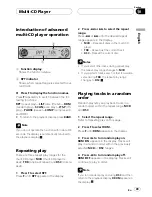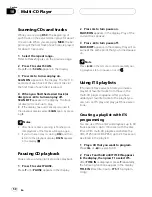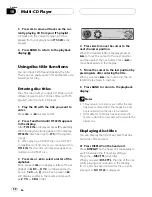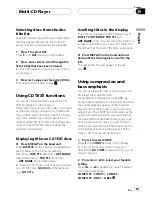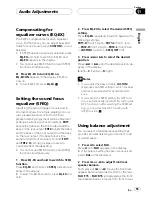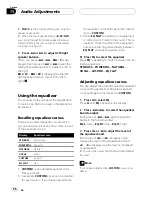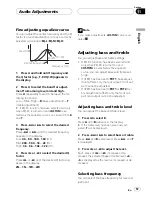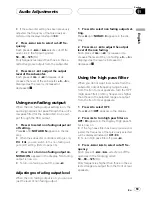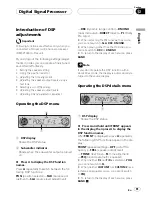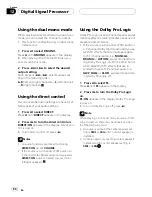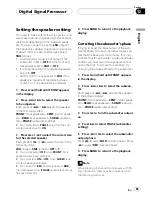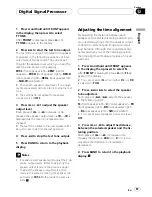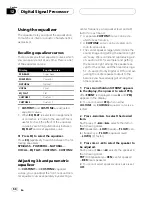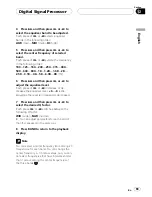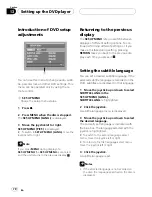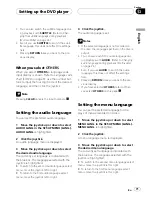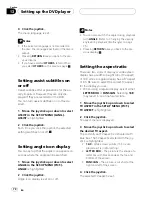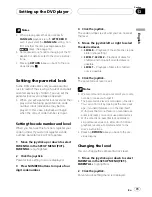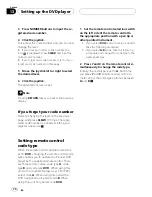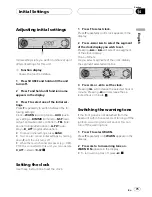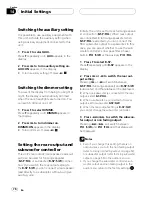
Introduction of DSP
adjustments
Important
Following functions are effective only when you
connected a Pioneer multi-channel processor
(DEQ-P7000) to this unit.
By carrying out the following settings/adjust-
ments in order, you can create a finely-tuned
sound field effortlessly.
1
Setting the speaker setting
2
Using the position selector
3
Adjusting the time alignment
4
Adjusting the speaker output levels using a
test tone
5
Selecting a cut-off frequency
6
Adjusting the speaker output levels
7
Adjusting 3-band parametric equalizer
Operating the DSP menu
1
2
1
DSP display
Shows the DSP status.
2
Subwoofer indicator
Shows when the subwoofer output is turned
on.
%
Press A to display the DSP function
names.
Press
A
repeatedly to switch between the fol-
lowing DSP functions:
POSI
(position selector)
FAD
(balance ad-
justment)
SLA
(source level adjustment)
DRC
(dynamic range control)
DMONO
(dual monaural)
DIRECT
(direct)
PL
(Dolby
Pro Logic)
#
When selecting the FM tuner as the source,
you cannot switch to
SLA
,
DRC
,
DMONO
.
#
When playing other than the DVD disc, you
cannot switch to
DRC
or
DMONO
.
#
To return to the display of each source, press
BAND
.
Note
If you do not operate the DSP function within
about 30 seconds, the display is automatically re-
turned to the source display.
Operating the DSP details menu
1
1
DSP display
Shows the DSP status.
%
Press A and hold until FRONT appears
in the display, then press A to display the
DSP function names.
After
FRONT
is displayed, press
A
repeatedly,
the following DSP functions appear in the dis-
play:
FRONT
(speaker setting)
HPF
(cut-off fre-
quency)
FRT-L
(speaker output level)
T TONE
(test tone)
FL
(time alignment)
PEQ
(3-band parametric equalizer)
#
When neither
F/L
nor
F/R
is selected in
POSI
,
you cannot switch to
FL
.
#
When neither
CUSTOM1
nor
CUSTOM2
is se-
lected as an equalizer curve, you cannot switch
to
PEQ
.
#
To return to the display of each source, press
BAND
.
Digital Signal Processor
En
61
English
Section
12



